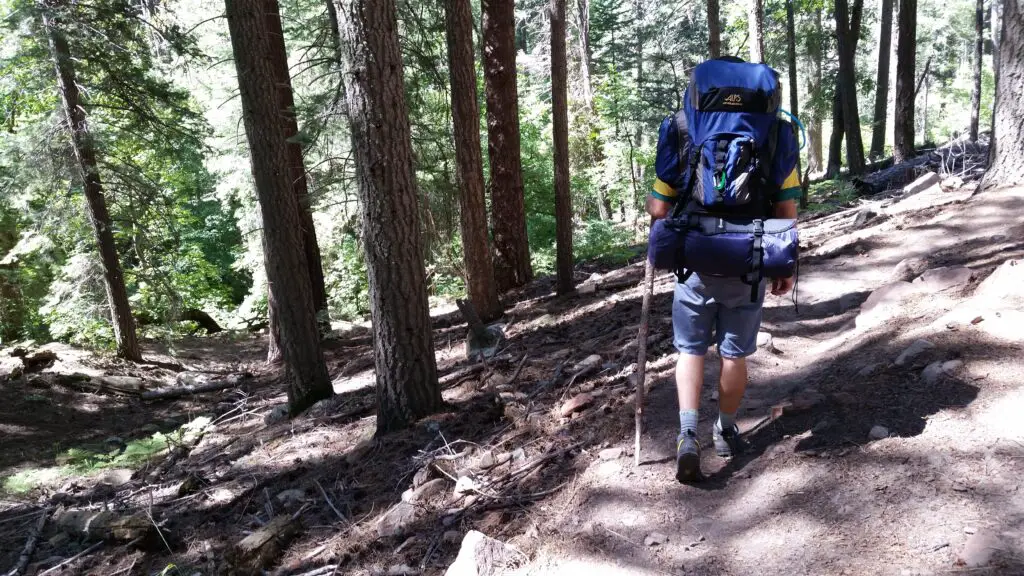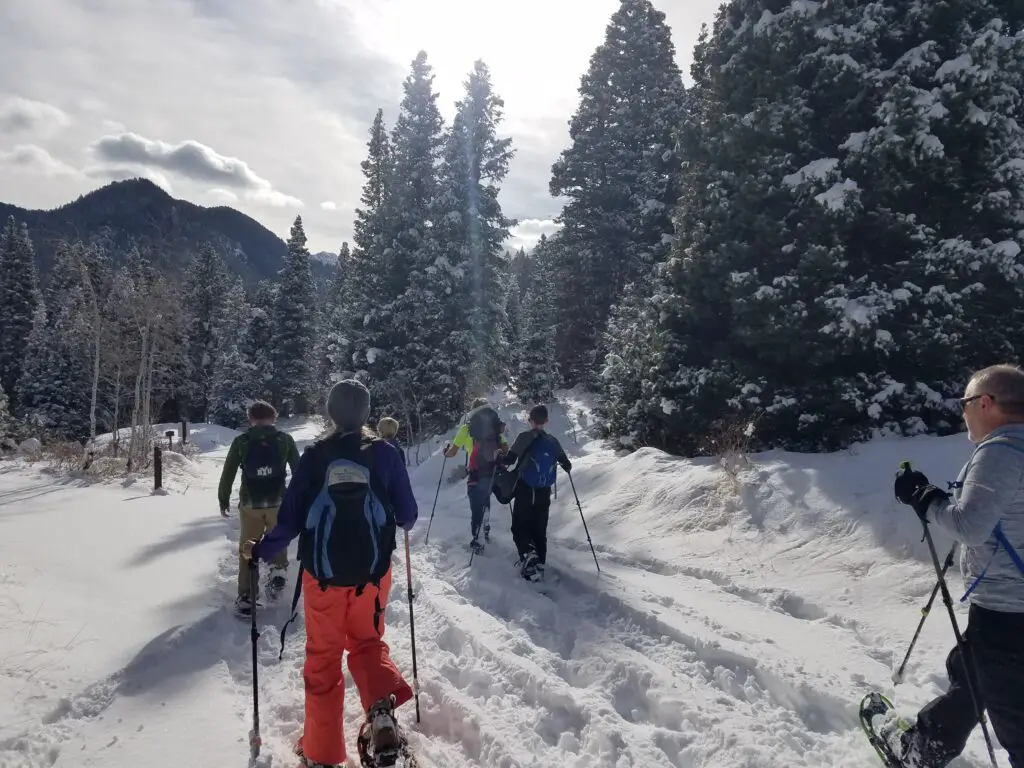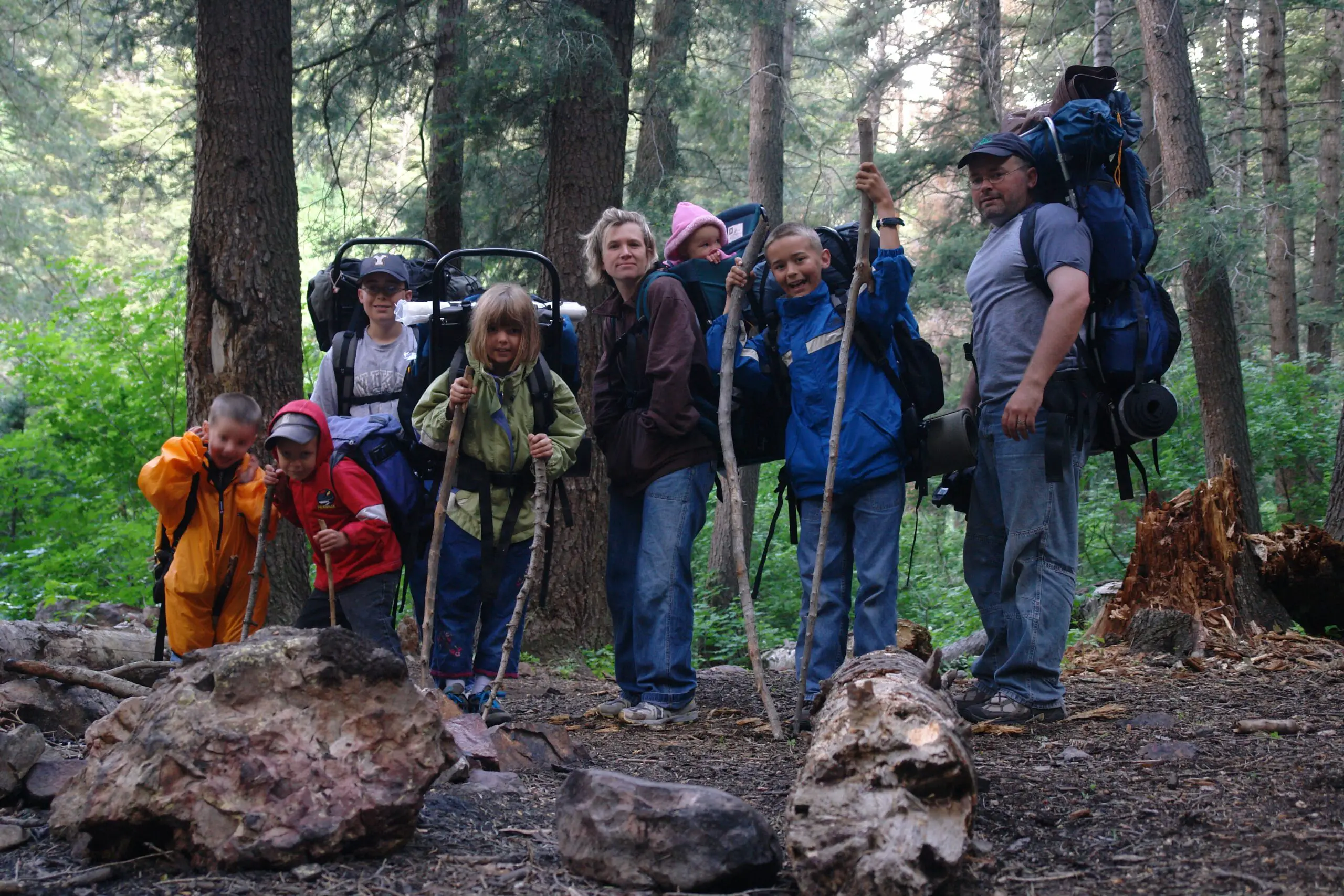When you picture a hiker in your mind, or if you’ve ever drawn one, odds are you added a walking stick into his hand. If you’ve gone hiking though, you probably haven’t used a walking stick unless you pick up an actual stick from the trail or you do a hike like Zion’s Narrows where you rent gear. Walking sticks can be beneficial for hiking for certain people and in certain situations.
Hikers use walking sticks to help them balance on rough terrain, to help assure footing on slippery terrain, and to remove some of the impact off their knees. Hikers may only use walking sticks on certain hikes like when there’s snow on the ground or the trail passes through rivers, or they might use walking sticks on all hikes as a fixed part of their kit.
I’ll go into more detail below suggesting when it’s appropriate and even necessary to carry walking sticks with you on a hike so that they aren’t an additional annoyance or burden to the hiker.
What Hiking Sticks are Used For
There are three main reasons hikers may use walking sticks:
- For Balance on Rough Terrain
- To Help With Footing on Slippery Terrain
- To Lessen the Impact on Their Knees
Balance
When hiking on rough terrain like a scree field from a rock fall or a path less-traveled, it can be nice to go from two legs to four for balance. A hiking pole or pair of hiking poles can help you maintain your balance as you go from rock to rock and reduce the risk of twisting your ankle- or worse.
A good hiking stick is also really useful for maintaining balance if you’ve got a heavy backpack that affects your natural balance. You can use the trekking poles to keep your pack and back upright instead of needing to heroically engage your core every time you start to sway too far in one direction.
Slippery Terrain
Walking sticks are also invaluable when hiking through waterways, such as when completing Zion National Park’s The Narrows. On hikes like this it can be very difficult or impossible to see what you’re stepping on before you put your feet down.
Hiking poles make it so you can go a lot faster by adding another point of contact or two with the ground so if you unwittingly step on something that doesn’t provide good traction you don’t end up falling over. This same benefit is found when hiking in mud or snow, as it provides you with solid traction when the ground is unstable or slippery.
Lessen Impact
This one is especially relevant for older and heavier hikers- one of the biggest benefits is that you can use your arms to lessen the impact of each step on your legs and especially your knees. The impact is certainly less pronounced on a relatively flat hike (source ) or a hike upwards, but for a hike downhill this can make a big difference.
) or a hike upwards, but for a hike downhill this can make a big difference.
This benefit is especially pronounced when hiking with a heavy pack or with increased body weight downhill, as the poles do more of the work (source ). It should be noted however, that although hiking poles lessen forces on your lower body, they have been found to increase forces on your upper body and cardiovascular system (source
). It should be noted however, that although hiking poles lessen forces on your lower body, they have been found to increase forces on your upper body and cardiovascular system (source ).
).

When to Use Walking Sticks for Hiking
There are benefits to using hiking poles in certain scenarios and for certain hikers. They’re a really important piece of any hiking kit when hiking through water in streams or river beds. It can be hard to maintain sure footing when walking on a dry river bed; hiking through a running stream is worse.
Hiking poles are also extremely really useful when hiking in snow, especially if you don’t have micro-spikes or crampons. Nice poles even have different types of points at the bottom for different types of terrain.
If you’re someone who experiences knee issues, it definitely makes sense to test out hiking poles to see if they provide relief. For older hikers, walking sticks can be a great way to help provide added balance.
Pros and Cons of Hiking Sticks
If walking sticks didn’t have any downsides, everyone would use them. The advantages are really that they improve stability and can help reduce impact on legs and joints. They can also be used as part of a kit for certain tarp shelters.
The main downside to using hiking sticks is the added weight of carrying them. They only weigh about a half a pound each, but that can be a lot over a long distance. This is especially significant backpacking where every ounce counts.
Many trekking poles collapse or telescope down for easy storage. If not, they can take up a lot of space and get in the way. The pointed ends always tend to catch on stuff.
If you choose to purchase a pair of hiking poles, the cost may be an additional barrier to an otherwise ‘free’ activity. They aren’t incredibly expensive, usually between $20 and $70 new, but they’re probably not at the top of anyone’s list of necessary hiking gear.
Are Hiking Sticks Worth It?
Hiking poles aren’t very expensive, they don’t weigh much, and collapse down to a manageable size, but the benefits are fairly minor as well. If you have knee problems or balance issues they’re a must-have, but otherwise they’ll probably just sit in your garage untouched except for the occasional snowy hike or water hike.
I’ve used them in the past, but got rid of them at some point and probably won’t pick up another pair. If I think it would be helpful, such as when I’m carrying a heavy pack or working through difficult terrain, I use a stick I find along the trail instead.

Types of Hiking Sticks
I’ve used the terms ‘walking stick’ and ‘hiking pole’ and trekking pole’ interchangeably throughout this article, but I’d like to parse them out a little bit here. There are different types of hiking sticks that have advantages and disadvantages.
Trekking Poles were traditionally just like ski poles, with a solid shaft and small basket on the bottom for snow. Most models today include removable feet for different surfaces and can be collapsed telescope-style to reduce their inconvenient size.
Hiking Sticks are free, functional, and can be burned or abandoned when you’re done with them. Or, if you’re like my kids, you make a pile of them in the corner of the garage with one you bring home from every hike!
Nordic Poles are a specialized type of walking stick that are designed to be used to increase motion while walking. The functionality is pretty similar to a trekking pole, and they have adaptable feet like most trekking poles, but they’re supposed to be used to swing the upper body and propel it forward rather than just to support.
Related Questions
Why Do Hikers Carry Sticks? Hikers carry one or two sticks or hiking poles to help with their balance on difficult terrain, to lessen the impact on their knees during downhill sections, and of course, for the aesthetics. The benefits of hiking sticks are greater for hikers with knee problems and balance problems.
Why Do People Use Two Walking Sticks? Two walking sticks helps provide symmetry in a way that one does not. One walking stick can be used to lessen impacts or to help balance on one side of the body, but two serve to support the person further and provide balance to each side.
Sources:
Level Hiking: https://pubmed.ncbi.nlm.nih.gov/21083766/
Hiking with Heavy Packs: https://pubmed.ncbi.nlm.nih.gov/17218900/
Synthesis of Research 1980-2019: https://pubmed.ncbi.nlm.nih.gov/32980249/

